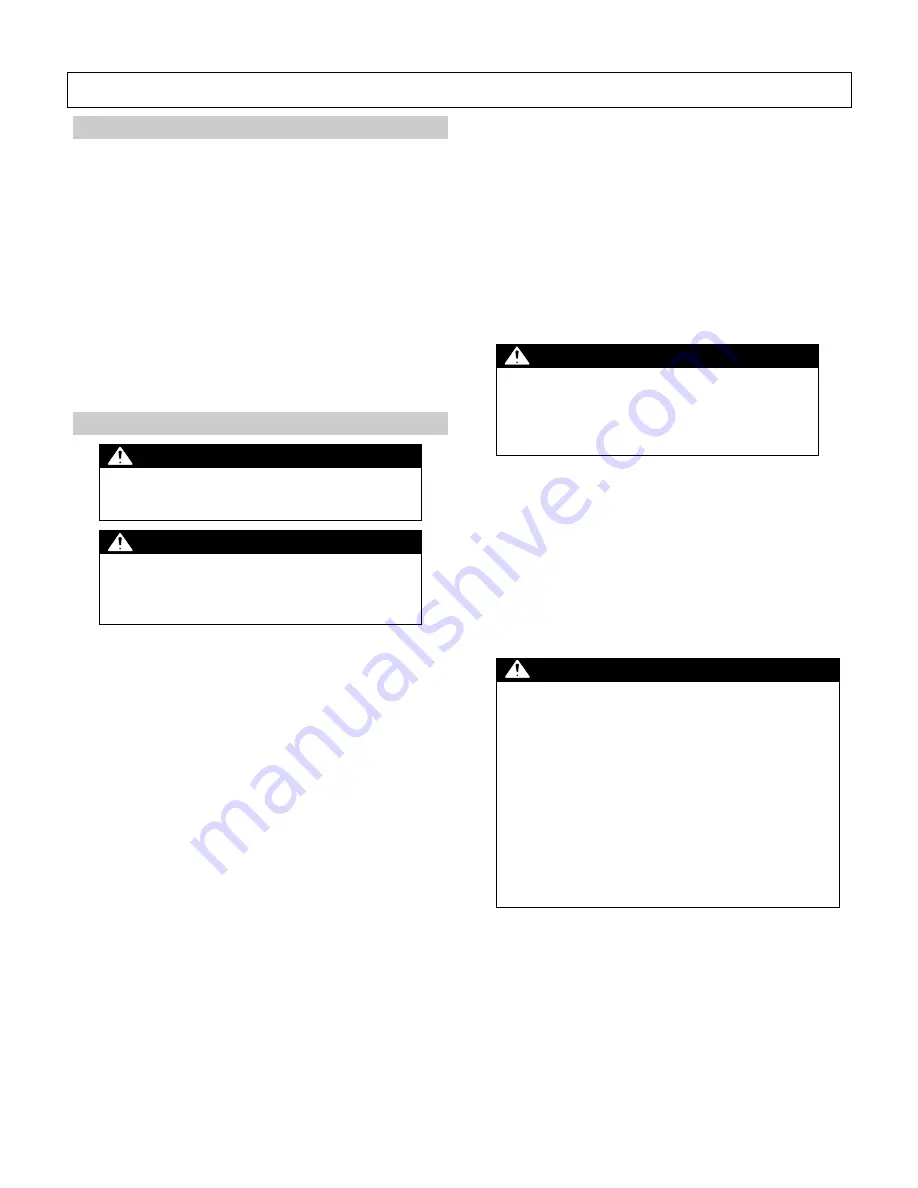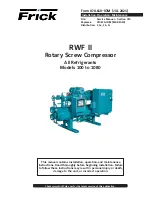
10
Initial Set-Up
Step 1. Inspect & Unpack
Upon receipt, inspect air compressor for missing or
damaged parts. Verify that it is the air compressor you
ordered.
See
“Component Identification”
section of this manual
for a diagram of the compressor and its components.
For
missing
components, contact Product
Support at 1-800-270-0810.
For
damaged
components, contact the freight
company that delivered the unit and file a claim.
If complete, fill out product serial number
information. See
“Limited Warranty”
section of
this manual.
Step 2. Select Suitable Location
WARNING: Lifting hazard
The compressor is heavy. Ensure that proper lifting
equipment is available to unload and move compressor
to installation site.
WARNING: Location hazards
Choose a suitable site for operating your compressor to
prevent possible death from carbon monoxide
poisoning or injury from fire/explosion, hot surfaces or
equipment tip-over.
Outdoor Use Only
Select a suitable outdoor location:
Where it will NOT be exposed to rain, snow, or
direct sunlight.
Where no flammable vapors, dusts, and gases
are present.
At least 7 feet away from combustible materials
Away from building windows or other air intakes.
Away from other heat-generating equipment.
Away from dusty/dirty conditions.
Positioning:
The compressor should be mounted on a dry,
firm, and level surface. It must sit level and be
stabilized so it will not slide or shift during
operation.
Situate so there is adequate pulling room for
starting the engine using the recoil starter.
Attempting to pull at an odd angle could rip off grip
cord and/or cause muscular injuries to the
operator.
Airflow:
The location should allow for adequate,
unobstructed airflow for cooling and combustion
air.
Do not allow debris to accumulate or block
airflow.
Do not operate with a tarp, blanket, or cover
surrounding the machine.
Do not place any objects against or on top of the
unit.
Exhaust:
WARNING: Exhaust modification hazard
Never attempt to attach ductwork to the muffler system
to allow for installation inside an enclosure. This could
cause heat build-up and increased exhaust back-
pressure, resulting in possible exhaust leakage or
damage to the compressor.
Place the unit so that the exhaust fumes will not
be directed towards people or building air intakes.
Keep a fire extinguisher rated “ABC” nearby
which is properly charged. Be familiar with its use.
Provide battery-operated or battery back-up type
carbon monoxide alarms in any structure that is in
close proximity to the running compressor.
Do not install in small, enclosed areas without an
ample circulation of supply air.
DANGER: Carbon monoxide hazard
Exhaust fumes from the engine contain carbon monoxide
(CO), a poisonous gas you cannot see, smell, or taste. The
CO generated by the engine can rapidly accumulate, even
in areas that appear to be well ventilated, resulting in
dangerous and fatal concentrations within minutes. NEVER
run air compressor inside any enclosed or semi-enclosed
spaces, including homes, garages, basements, sheds,
boxes, pick-up truck beds, RVs, or boats. These spaces
can trap poisonous gases, EVEN if you run a fan or open
windows. If you start to feel sick, dizzy, or weak while using
the air compressor, shut off the engine and get to fresh air
RIGHT AWAY. See a doctor. You may have carbon
monoxide poisoning.
Ideal operating temperatures:
40
and 100
F (4
and 37
C).
Operating Limitations:
15
F (-9
C) or above 125
F (52
C).
If temperatures consistently drop below 32
F (0
C),
store inside a heated building. If this is not possible,
protect the safety/relief and drain valves from freezing.











































